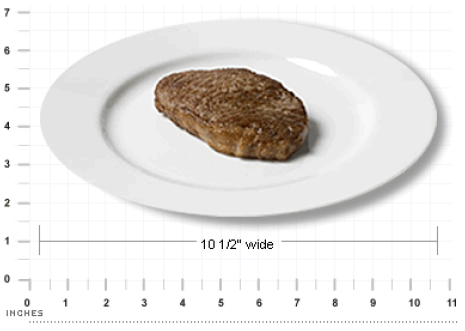Introduction
Type 2 diabetes is the most common type of the disease; if affects over 90% of the people who have diabetes. Your food and physical activity choices may determine your risk for developing type 2 diabetes.
Who Is At Risk For Diabetes?
The people most likely to get type 2 diabetes are older adults. More than 12 million or 23% of the people over the age of 60 have diabetes. Other people at risk for developing diabetes are those with a family history of diabetes, women who have had gestational diabetes, people who are African Americans, Hispanic/Latino Americans, American Indians, some Asian Americans, and Pacific Islanders, and people who are overweight or obese and/or physically inactive.

Can You Do Anything About These Risks?
The good news I that if you are at risk you can do something to prevent or delay the onset of diabetes. While you cannot turn back the hands of time, you can help yourself. And the BEST NEWS is that small changes can make a big difference.
Research shows that if you are overweight, losing approximately 5-10% of your body weight can reduce your risk. This means that if you weigh 200 pounds, even if you “ideal” body weight is 135 pounds, a 14 pound weight loss-to 186 pounds-can improve your health and lower your risk of developing diabetes. This is true for people whether they are young or old; a small weight loss dramatically improves health.

How Can You Lose Weight?
The time honored, tried and true way to lose weight is to take in fewer calories and to use more energy. Simple things like eating smaller portions or choosing lower calorie foods can help you eat fewer calories in a day.
- Cutting down on meat from 8 ounces to 6 ounces for dinner will save between 100 and 200 calories a day.
- Trim the fat from meat before you cook it or eat it. Each tablespoon of fat you discard, instead of eat, contains about 100 calories.
- Switching from a regularly sweetened soft drink to one sweetened with a reduced calorie sweetener will save about 140 calories for each 12-ounce can.
- If you switch from 2% to 1% milk you will save 20 calories for each 8 -ounce glass. If you switch from 2% to non-fat or skim milk, you save 35 calories for each 8 ounce glass.
- If you eat at a fast food restaurant do not let the sales staff talk you into buying the largest size. This may appear to be a great bargain, but it entices you to eat more than you want or need, it could turn into a costly mistake.
While you will need to make some changes to lose weight, you do not need to completely eliminate your favorite foods. As a matter of fact you will probably be more successful if you make small, rather than large changes.
The other thing that you can do to prevent diabetes is to increase your physical activity. The studies show that 150 minutes of moderate intensity physical activity, such as brisk walking each week, is what it takes. That is 30 minutes, 5 days a week. When you consider that there are 10,800 minutes in every week, 150 minutes (1.1%) of your time devoted to improving your health does not seem unrealistic.



How Can You Increase Your Physical Activity?
- Walking is great! Walk the dog. Walk with your spouse or significant other. Walk with your neighbors, your children, your friends, or your coworkers.
- Walk inside at the mall or on a treadmill.
- Walk outside on a track, in the park, or around your neighborhood.
- Dancing is a great activity and may be a way to enhance your social life as well.
- Ride a bike, either out-of-doors or indoors on a stationary bicycle.
- Play soccer, baseball, basketball or any other active sport.
- Join an aerobic class.
You do not have to do 30 consecutive minutes of physical activity in a day. You can break it into two 15-minute, or three 10-minute segments. The important thing is to do something. Any increase in activity is a positive step to taking charge of your health. Remember, that small steps can have a big payoff. Your lifestyle choices have major impacts on your health.



References
- Knowler, WC, Barrett-Connor, E, et. al., Reduction in the incidence of type 2 diabetes with lifestyle intervention or metformin, N Engl J Med, 346:6, Feb. 7, 2002, 393-403.
- Krishka, A., Striving for a more active community, Am J Prev Med 2002;22(4S)6-7.
- National Diabetes Statistics: General Information and National Statistics on Diabetes in the United States, 2000. National Institute of Diabetes and Digestive and Kidney Disease, National Diabetes Information Clearinghouse, 2002.
- Centers for Disease Control and Prevention. National diabetes fact sheet: general information and national estimates on diabetes in the United States, 2007. Atlanta, GA: U.S. Department of Health and Human Services, Centers for Disease Control and Prevention, 2008.
- ASPE
Leontos, C.
2002,
Diabetes and Lifestyle Ounce of Prevention,
Extension | University of Nevada, Reno, FS-02-48


